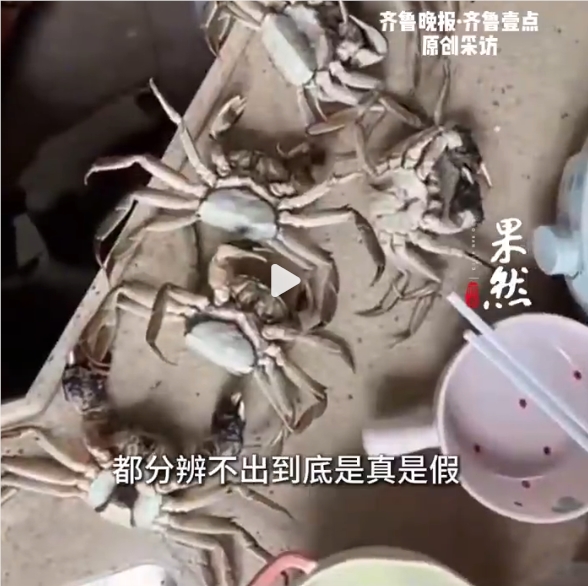Tongyi Qianwen officially open-sourced its first image generation foundation model, Qwen-Image, on August 5. This 20B parameter MMDiT (Multimodal Diffusion Transformer) model has achieved significant breakthroughs in text rendering and image editing. The model not only achieved SOTA (state-of-the-art) performance on multiple authoritative benchmark tests but also demonstrated remarkable advantages in complex text rendering and precise image editing.
Technical Breakthroughs: Three Core Capabilities Lead the Industry
The biggest highlight of Qwen-Image is the comprehensive enhancement of three core technical capabilities. First, it excels in text rendering. Traditional image generation models often face issues such as distorted fonts, incorrect content, or messy layouts when handling textual content. Qwen-Image effectively solves these pain points through an innovative MMDiT architecture. The model can achieve high-fidelity text rendering in various complex scenarios, maintaining high accuracy for both Chinese and English text mixing or long paragraph generation.

In image editing, Qwen-Image demonstrates unprecedented consistency in editing. Users can make precise modifications to images, and the model will accurately execute editing instructions while maintaining the original image's overall style and structure. This consistent editing capability is of great significance for professional design work, significantly improving the efficiency and quality of image processing.
The third major advantage of Qwen-Image is its cross-benchmark performance. The model performs excellently in general image generation tests such as GenEval, DPG, and OneIG-Bench, and also ranks among the best in image editing benchmarks such as GEdit, ImgEdit, and GSO. In text rendering evaluation benchmarks like LongText-Bench, ChineseWord, and TextCraft, it leads comprehensively. This all-around performance advantage proves the advanced nature of the model's architecture design and the effectiveness of its training strategy.
Application Scenarios: From Professional Design to Daily Creation
The practical application capabilities of Qwen-Image have been fully demonstrated in multiple scenarios. In poster creation, the model not only accurately reproduces specified design styles but also precisely generates user-specified Chinese and English text content while maintaining the details of character poses and expressions. This ability holds significant value for commercial applications such as advertising design and promotional material production.
In modular design tasks, Qwen-Image shows strong layout planning capabilities. It can complete complex typesetting designs and generate corresponding icons, titles, and introduction texts for different modules, achieving a coordinated and unified overall design. This capability is especially suitable for scenarios requiring precise typesetting, such as corporate brochures and product manuals.
Even in highly challenging small-area long-text generation tasks, Qwen-Image maintains excellent performance. No matter how small the paper area or how long the paragraph, the model can accurately generate text content and supports flexible switching between Chinese and English. This ability provides strong technical support for detailed applications such as business card design and label making.
Artistic Expression: Diverse Style Creation Ability
In general image generation, Qwen-Image supports a wide range of artistic styles. From photo-realistic realism to imaginative impressionist paintings, from popular anime styles to clean modern minimalist designs, the model can flexibly respond to users' creative prompts. This diverse style adaptability makes it not only applicable to professional design work but also provides powerful tools for ordinary users' creative expression.
The model's style transfer capability is particularly worth noting. Users can let the same theme content present completely different visual effects through simple text descriptions. This flexibility provides content creators with more creative possibilities and helps inspire new design ideas and expressions.
Open-Source Strategy: Promoting Industry Ecosystem Development
Tongyi Qianwen's decision to fully open-source Qwen-Image reflects its firm commitment to promoting development in the field of image generation. The model is now available for free on the ModelScope community and the Hugging Face platform.
The implementation of the open-source strategy will significantly lower the technical barriers for visual content creation. For small and medium-sized enterprises and individual developers lacking large-scale R&D resources, this is undoubtedly an important technological empowerment opportunity. Through secondary development and customized improvements of the open-source model, more innovative applications are expected to emerge based on it.
Tongyi Qianwen stated that by open-sourcing Qwen-Image, it hopes to stimulate more possibilities for innovative applications and looks forward to active participation and feedback from the community. This open and cooperative attitude helps build a more transparent and sustainable generative AI ecosystem.
Industry Impact: Image Generation Technology Enters a New Stage
The release of Qwen-Image marks a new stage in the development of image generation technology. The 20B parameter MMDiT architecture represents the forefront of current technology, and its breakthrough performance in text rendering and image editing sets a new technical benchmark for the entire industry.









